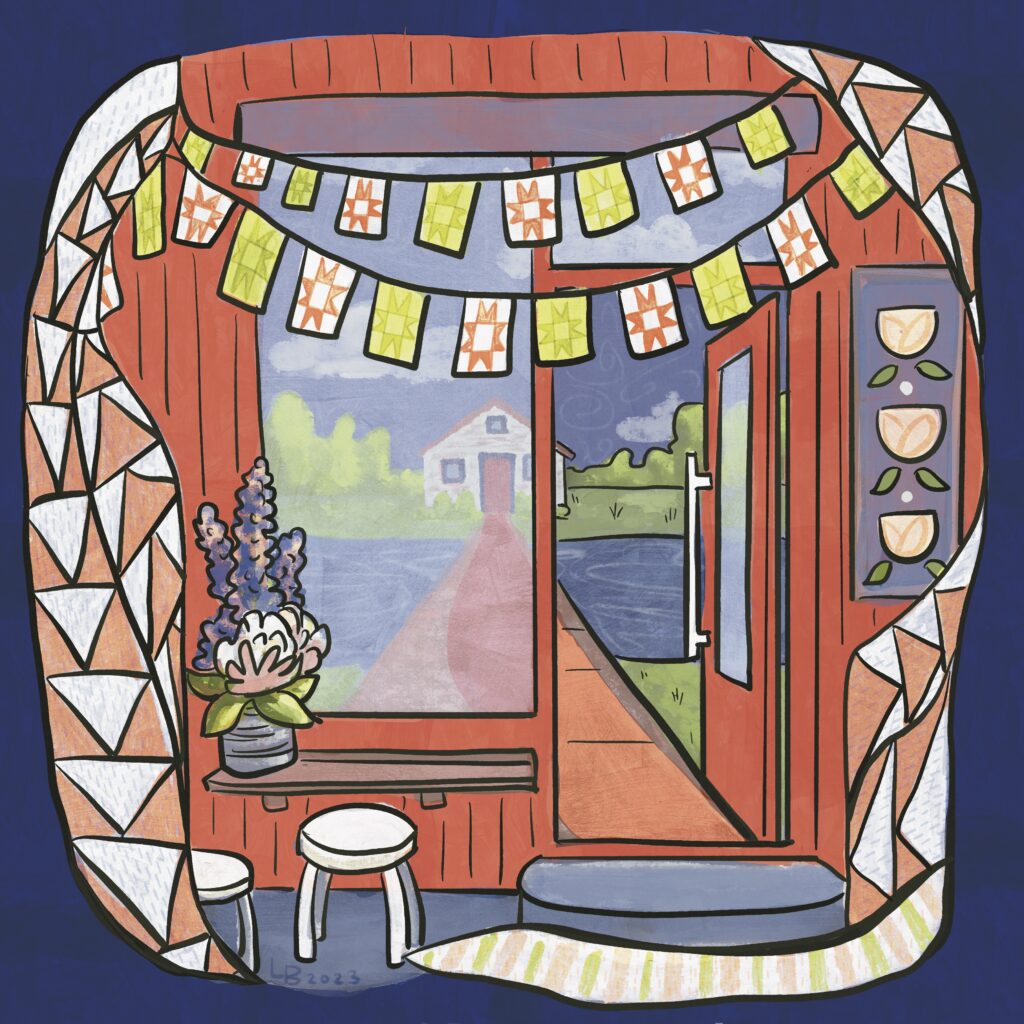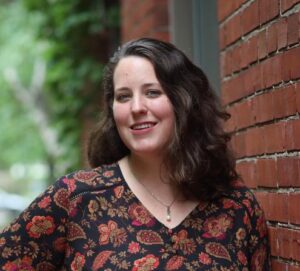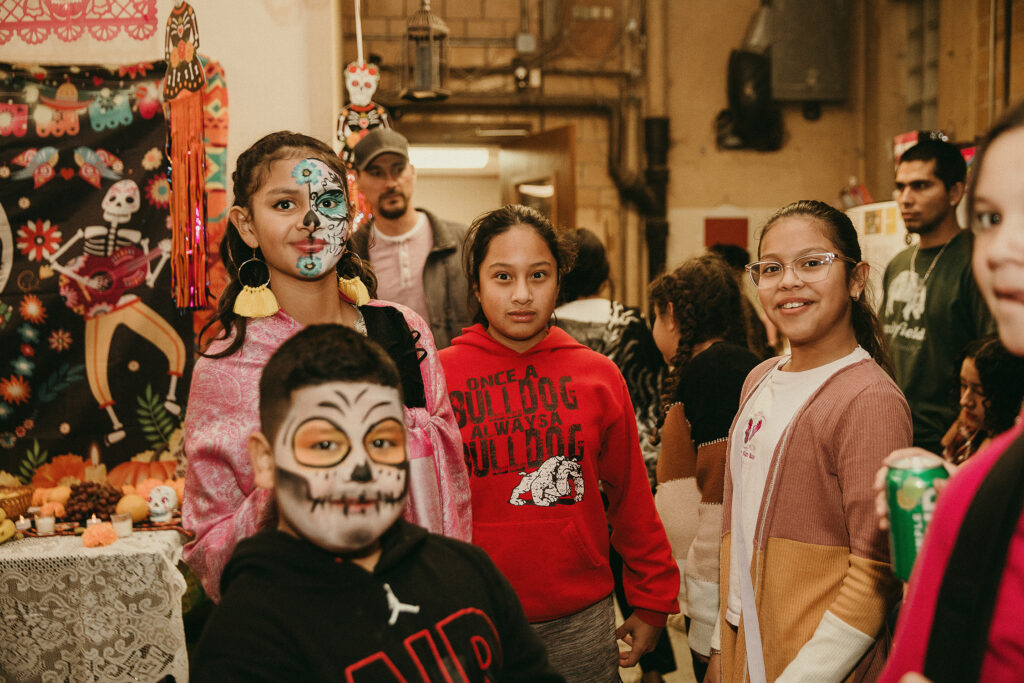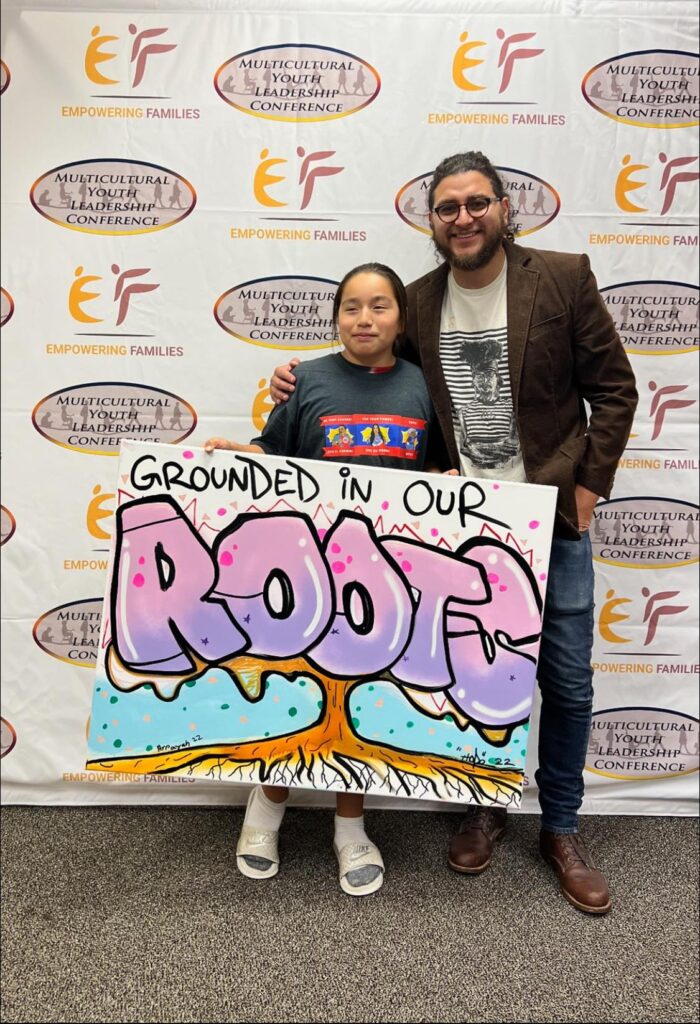The face of rural America is changing. Some of the most rapidly diversifying places in the country are communities with populations under 50,000. Between 2010-2016, immigrants accounted for 37% of rural population growth.
Rural places across the nation are investing in community-based strategies that bring residents together to build connections, share stories, and uplift shared values. Placed-based initiatives — especially ones grounded in arts and culture — are necessary and powerful tools to build support for infrastructure, programs, and policies that advance inclusion and belonging.
When we hear stories that make us think about our own history, uplift our common struggle, or demonstrate our shared values, we can see ourselves reflected back. When we see storytellers in our communities that come from all walks of life, we are creating the conditions that spark individual actions toward welcoming and belonging.
So, how can we use the power of stories to build more welcoming communities? While each community’s strategy is different, many of the members of Welcoming America’s network follow a similar path when beginning their journey.
Communities advancing welcoming work often begin with storytelling as a way to make the community aware and supportive of the different ethnic and religious groups who reside there. Once a community becomes more aware of its cultural diversity, welcoming work often moves toward engaging institutions, community-based organizations, faith communities, and even local government through events or organized cultural exchanges. When we bring individuals and institutions together to learn, celebrate, and explore cultural diversity as a community, we have the opportunity to build a whole-of-community approach to inclusion and move into a future where everyone can thrive and belong.
In this tool, we at Welcoming America share three takeaways from a recent podcast by Arts Midwest featuring stories of welcoming in rural Nebraska from Liz Rodriguez at Centro Hispano and Valeria Rodriguez at Empowering Families. We share ways to create the conditions for our diverse communities to share their stories, engage individuals and institutions in welcoming work, and plan for and execute successful Welcoming Week events in your community.
Companion Audio: Rural Threads

Welcoming + Belonging in Rural Communities
What steps can rural communities take to cultivate a sense of belonging, especially for immigrants? Explore tried and true community-based strategies that bring residents together to build connections, share stories, and uplift shared values.
Featuring
-

Alivia Haibach
Welcoming America
Alivia Haibach is a Regional Manager for Welcoming America. She works with members across to develop policies and strategies to increase equitable access and create opportunities that yield a sense of community belonging for all.
Prior to Welcoming America, Alivia worked as the Health Equity Coordinator at the Erie County Department of Health in Erie, Pennsylvania. She focused on centering community voices to shrink the health disparity gaps in Erie County with an emphasis on communities that have experienced historic marginalization.
Alivia holds a Bachelor of Arts degree from Allegheny College in International Relations and is a Master of Public Administration degree from Gannon University.
-

Valeria Rodriguez
Empowering Families
Valeria Rodriguez immigrated from Mexico to Mitchell, NE with her family when she was five years old, in 2000. Valeria holds a B.A. in Spanish and Political Science from the University of Nebraska-Lincoln and is currently pursuing her master’s in Public Administration from the University of Nebraska-Omaha. She serves on the board of the Nebraska Civic Engagement Table and Panhandle Partnership. In 2018, she co-founded Empowering Families. As an immigrant herself she felt an organization was missing to help advocate and build the collective power that exists within her community, in rural Western Nebraska.
Valeria currently serves as Empowering Families’ part-time executive director, and works full-time as a DOJ Accredited Representative with Immigrant Legal Center, a nonprofit organization that provides legal services, education, and advocacy for immigrants in Nebraska and Southwest Iowa.
-

Liz Rodriguez
Centro Hispano
Liz Rodriguez is the Welcoming & Belonging Director at Centro Hispano, a non-profit organization serving immigrant families, learners, and entrepreneurs in rural Nebraska.
Uplifting our personal narrative
Understanding who is in our community is critical to breaking free of our silos. Coming together to share stories is a wonderful way to open ears and hearts to other cultures and histories.
Community members all have stories of welcome to share. By creating opportunities for people to come together and talk about their personal history of welcoming and belonging, we can weave a welcoming narrative together.
Personal stories or narratives are especially powerful in changing people’s beliefs and behaviors. Storytelling can set the stage for active listening and emotional engagement, which can help people be more open to changing their beliefs. Rural communities have many events and opportunities that can use stories and personal narratives as connection points.
Consider building your personal story of welcome by reflecting on the following questions:
- What is your story of arriving in this community?
- What brought your family here?
- Why has your family continued to live in this community?
- Where in the community do you feel like you belong?
Once you’ve thought about these questions yourself or in a group that you are a part of, try using this technique to open meetings or other gatherings.
Welcoming Network members Liz Rodriguez (Welcoming & Belonging Director at Centro Hispano) and Valeria (executive director of Empowering Families) describe their experience using storytelling and personal narratives:
Communicating with Stories
“[Sharing] our own personal stories first… helps us open up to that conversation. Storytelling is a powerful thing. I believe it’s one of our best tools to be able to communicate with stakeholders, communities, [and] government. To those who want to join in the work or who don’t know who we are or what the work is about, it is eye-opening for them when they come and see and hear.”
— Liz Rodriguez

Shifting Narratives
“We were able to bring in [a speaker] who is a documented Black immigrant. There’s always a perception that immigration is a Latinx issue when it’s not, and so him coming to rural Nebraska to share his story and his immigrant experience was so eye-opening for a lot of community members as well as…local government officials that attended our event because they had never heard a story like his. We were able to shift the narrative by bringing him to our community to share his experience.”
— Valeria Rodriguez

Creating Safer Spaces
The space to tell our community’s stories are just as important as the stories themselves. Creating spaces where all community members feel safe and supported to share their stories across lines of differences can feel challenging. A few ways to start creating these spaces in your community are:
-
1
Bring your neighborhood together for a project of value to all, such as community gardening, flower planting, or a street clean-up. Get inspired with ideas from the Fostering Belonging Individually and Structurally video series.
-
2
Consider planning and attending a Welcoming Table event.
-
3
Follow tried and true practices that support intergroup contact. One tool we developed shares five steps to create successful events that build connections between immigrants and non-immigrants.
Centro Hispano in Columbus, Nebraska is even bringing the idea of welcoming to life by building a welcoming center in their small city. Creating opportunities for people to come together and talk about their personal history is an important way to uplift the diversity in our communities and better understand who our neighbors are and where they come from.
Creating a Welcoming Center
“Our idea is just to have all different organizations that normally are not as accessible to the community and to certain community members brought now to them instead of them going to the organizations… Our space is to be welcoming and we want them to feel as though they’re coming into a community that embraces them, into a place that they can be themselves and ask the questions that they’re afraid to ask. We were thinking about those immigrant families who sometimes are scared to go to the doctor. We were thinking about those immigrant families that are scared to go into a bank because they don’t speak the language.”
– Liz Rodriguez

Building a coalition to celebrate community
While activating individuals can be extremely powerful on its own, bringing those individuals together with community institutions can take welcoming to the next level.
Place-based events that involve art projects or storytelling create opportunities for organizations and individuals to map out their entry point to welcoming work together. Planning these events can be an opportunity to consider who’s at the table, from initial concept to event launch, and perhaps more importantly, who needs to be at the table to move the work forward.
Communities across the nation are building partnerships and coalitions where every critical player in welcoming work is recognized. Planning an arts and cultural event can be a great starting point for your coalition. At Welcoming America, we use these steps to work with rural communities starting to build multisector coalitions:
-
1
Identify 10 diverse local leaders and residents to regularly meet and discuss community-wide welcoming efforts.
-
2
Convene at least one meeting with the stakeholders to set goals on community-wide welcoming and belonging.
-
3
Create a timeline or plan for completing the goals.
-
4
Celebrate each other and the small successes along the way.
Using these simple steps can help your local network of partners move welcoming work from individual action to community-wide engagement.
How Welcoming Week can bring it all together
Place-based welcoming initiatives yield opportunities for organizations to get involved in community transformation. Welcoming Week is an excellent opportunity to bring individuals and organizations together and build support for welcoming and inclusion in your community.
Every year, Welcoming Week is a campaign that showcases the movement of communities striving to be more welcoming places for all. Participating communities proclaim welcoming values through events and local initiatives that foster mutual understanding between immigrants and non-immigrants.
Empowering Families leveraged Welcoming Week to support a welcoming narrative at one of their annual conferences in Scotts Bluff, Nebraska:
Generations of Welcoming
“Last year our Multicultural Youth Leadership Conference and all the cultural events that we did within that conference took place during Welcoming Week. This amazing conference [is] able to benefit youth by bringing different speakers and workshops to build resilience and get them to hear stories and experiences that they wouldn’t hear about in the school system. We are building our next generation of community members, and through this conference, we’re able to share these narratives of welcoming and belonging. The conference is one element to the larger strategy that we’re going to be doing here in Scotts Bluff.”
— Valeria Rodriguez

Cities, towns, counties, and states can lean into what makes their communities welcoming places and share stories that highlight the benefits of fostering belonging for all people, especially immigrants. For example, Centro Hispano leveraged Welcoming Week to celebrate immigrant artwork in Nebraska. A local organization donated materials and space for a Cuban immigrant artist in the community to lead a class and teach people about her culture through art.
If Welcoming Week is the right approach to amplify the stories of immigrants and refugees in your community, you can encourage community stakeholders to engage in welcoming in any of the following ways:
-
1
Ask businesses and community partners to sponsor your organization’s Welcoming Week efforts.
-
2
Fill out “I’m a Welcomer” signs. Then, print them and share photos of your community holding them.
-
3
Ask community members to sign up to volunteer their time at your Welcoming Week event.
-
4
Encourage your community to attend a local Welcoming Week event and use Welcoming America’s social media and event planning toolkit to document your experience.
-
5
Start conversations with local organizations about becoming a member of the national Welcoming Network.
Welcoming Week is one opportunity to bring together the stories and partners that make your community a vibrant home to people of all backgrounds. Whether your small community is just getting
